
At the beginning of this year, my husband and I took over management of a guesthouse in Japan. While we were looking forward to our new role in the community, the truth is that we were already busy enough without taking on yet another daily responsibility. But in the countryside, where it’s hard to find employees willing to come and live far from convenience stores and flush toilets, most of us are already doing double or triple duty to keep our little villages alive. And where I live, tourism is a big part of that.
So, while the countryside “slow-life” will probably always elude us, we admit that whenever Japanese people check in to our guesthouse, we both give a sigh of relief. Why? Because Japanese people are the best guests in the world! And that makes our job all that much easier.
We share with you three things that make Japanese guests the best an innkeeper could ask for.
Last year, over fifty percent of our guests were Japanese. Of course, we get foreign visitors from all over the world, especially since our guesthouse is listed in the Lonely Planet. The majority are good, conscientious guests. But it’s the Japanese who really impress us. You’re going to see why (and probably gasp yourself) a little later, but first I want to show you around our place, called the Shiraishi International Villa, which is located on Shiraishi Island in the Seto Inland Sea.
This is the main building of the villa which houses a shared kitchen and living room.
▼The back side of this building faces the sea and has a wooden deck where guests can relax and enjoy the view.
▼The entire main building is outfitted in floor-to-ceiling windows.
▼The peaked roofs that run off to the left of the main building are the guest rooms.
▼This is the back of the rooms, each of which has a window facing the sea.
▼To get to the guest rooms, you leave the main building and walk through a Japanese rock garden. All five rooms are to the right.
Of the five guest rooms. Four are Western style with two single beds and one is Japanese style with futons.
▼The four Western-style rooms hold two single beds each.
▼The Japanese-style room has a table and futons.
▼All rooms have sea views
Despite the attractive architecture and setting, the villa is really just a glorified hostel for budget travelers. The villa’s website explains:
“The Okayama Prefectural Government in cooperation with local governments established the International Villa Group in 1988 as a non-profit organization to provide international guests with a place to rest and relax in the beauty of rural Japan. In order to make this opportunity available to as many individuals as possible, the price is subsidized to below actual cost. The villas are essentially houses where guests may share the facilities with other guests as their ‘home-away-from-home’. The only staff consists of part-time cleaning and maintenance personnel [us!] therefore each guest is expected to bring their own foodstuff, prepare their own meals and clean up after themselves.”
With overnight rates at a straight 3,500 yen per person (US$32) for the first night and 3,000 yen ($28) for each night thereafter, the villa mainly attracts backpackers, young people and other budget travelers. This is a good thing since the villa is way off the beaten track and the countryside offers very few amenities for guests. There are no TVs in the rooms, for example, and there is no convenience store.
So now that you know a little bit more about the Shiraishi International Villa, let’s talk about those wonderful Japanese guests! While we are lucky to get an interesting mix of people from all over the world staying here, and while we love them all, we can’t deny that easy guests are the best guests and the ones that make happy managers. And while some guests will always shine over others, it’s the consistency and reliability of the Japanese that wins us over.
While I could go on and on about what makes Japanese guests so great, I’ve narrowed it down here to the top three things that, as managers, make us go Yay!
1. Before check-out, many Japanese people will strip their beds/futons of the linens. While some will leave the dirty linen in a pile on the floor, most will fold and stack them.
Those who don’t strip their beds make the bed up again so it looks as it did when they checked in. If there is just one person who stayed in a double room, we often can’t tell which bed was slept in!
▼Which bed do you think was used? Eenie meenie miny moe…
The only way to tell is to look under the bed cover. If the bottom sheet is slightly wrinkled, instead of pulled tight, then that’s the bed that was used. Another thing we’ve noticed is that most guests will choose the bed furthest from the window (or closest to the door, however you want to look at it).
If the guests are staying in the Japanese room, they’ll usually put the futons back into the closet.
▼The logic? To be neat and tidy, of course!
While one could consider this to be unhelpful, since we still have to take the futons out again to change them or put on new sheets, the fact that anyone would be this tidy is so impressive, it makes our hearts melt. It’s enough to emit a collective “Awwww, isn’t that sweet!” as if we were admiring a tiny kitten.
Just now as I am writing this article, some Japanese guests checked out of room No. 2! Let’s see how they left the room.
▼We head down the corridor to room No. 2
▼We find the room and open the door…
Wow–a new record! They have not only stripped the beds (and piled the used linen on the floor) but they’ve also folded the bed covers! And closed the shoji windows to keep out the damaging sunlight.
▼Okay, they’re not folded that neatly, but I am jumping for joy right now.
On another note, when guests stay longer than three nights, we offer a clean set of towels on the third day. Since there is a laundry room on site, the fact that Japanese people will decline fresh towels and opt instead to wash the current towels themselves shouldn’t really surprise us. But it does. Indeed, it does!
▼Clean towels anyone? No thanks!
2. They check out on time.
Late check-outs are the number one barrier to getting our jobs done on time before the next guests check in. To add to the pressure, most newly arrived guests will ask to check in early! So on-time check-outs are key to running a tight ship. Why do the Japanese check out on time? Because those are the rules, of course!
I recently asked a compatriot why it was that so many other nationalities don’t check out on time and he said, “In the US, check-out times are considered just guidelines.” Ohhh my god. As a guesthouse manager, this just makes me want to faint.
3. They leave even the kitchen sparkling clean.
The Japanese clean up the kitchen and even clean the stove top after they’ve used it. They put away their dishes and generally leave the place cleaner than when they found it. I’ve even had guests ask me where the mop is so they can clean the kitchen floor before they leave. I thought I had died and gone to heaven.
▼Dishes are put back into the cupboard carefully. Same-patterned bowls and plates are in their proper stacks and glassware is grouped properly. Okay, there’s one tea bowl out of place–we can live with that!
We don’t know how Japanese guests would do in other countries where they’re not as familiar with local customs, but we’d be willing to bet that they’re still clean and tidy.
I’ve heard Japanese people say they’re surprised that other nationalities don’t always clean up after themselves when they stay overnight somewhere. The truth is that we often feel that’s part of staying somewhere–paying someone to clean up after us. While that makes sense too, the Japanese just don’t feel comfortable leaving a mess. To the Japanese, when it comes to public places, even international sporting events, you should always be tidy. It’s not just a matter of politeness, it’s a matter of integrity.
These are a few Japanese travel habits we could all learn from.
Do you have any good travel habits you wish more people would follow? Please enlighten us in the comments section!
All photos © Amy Chavez/RocketNews24




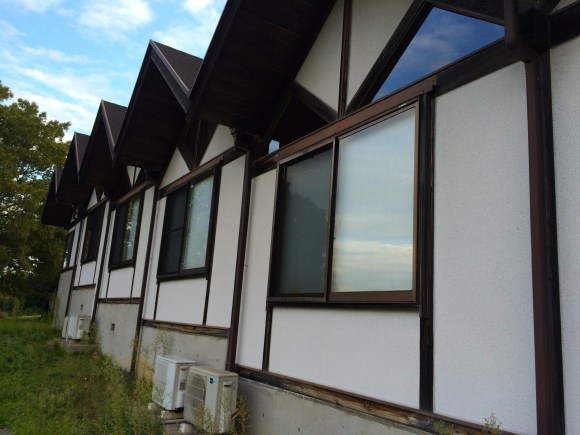
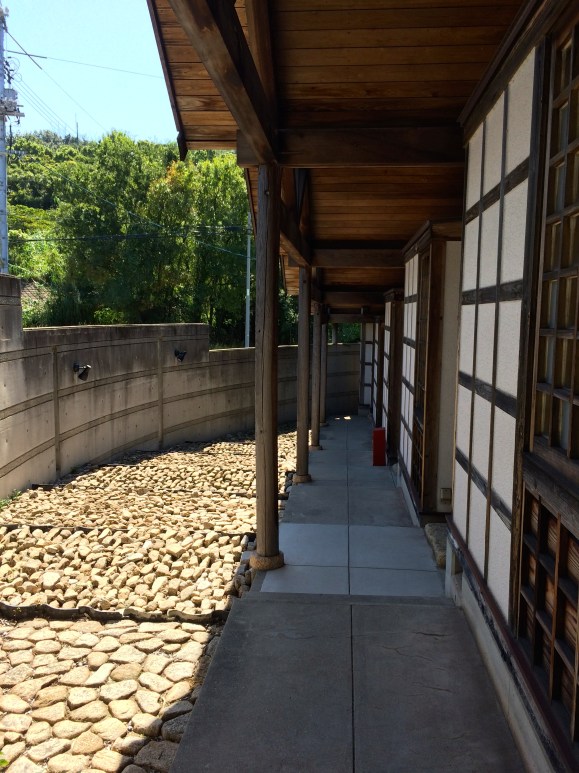
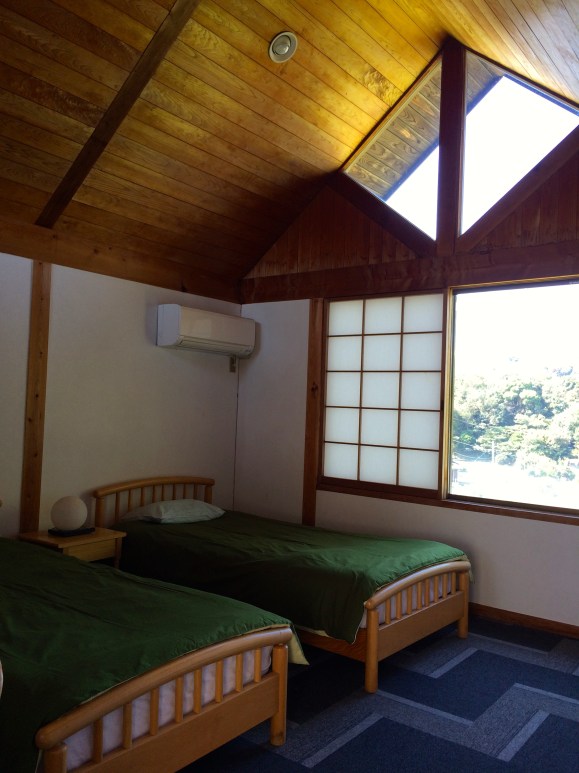
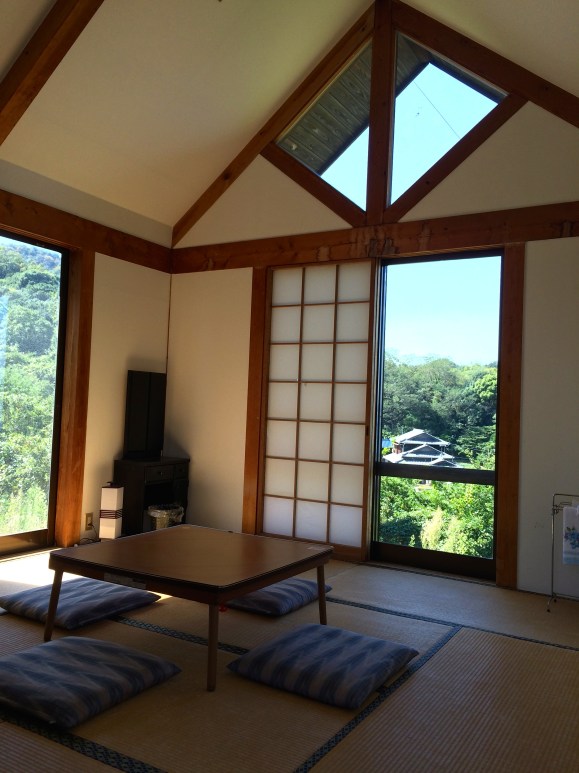

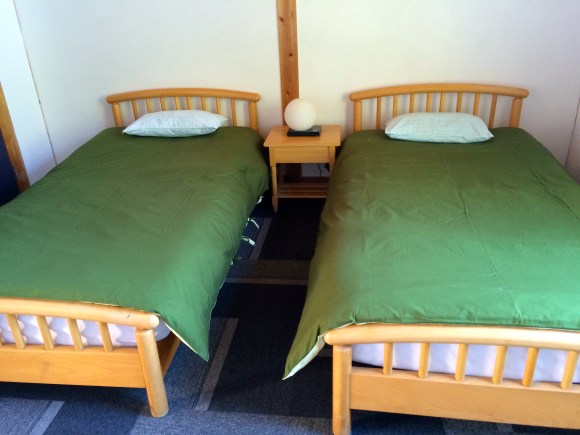


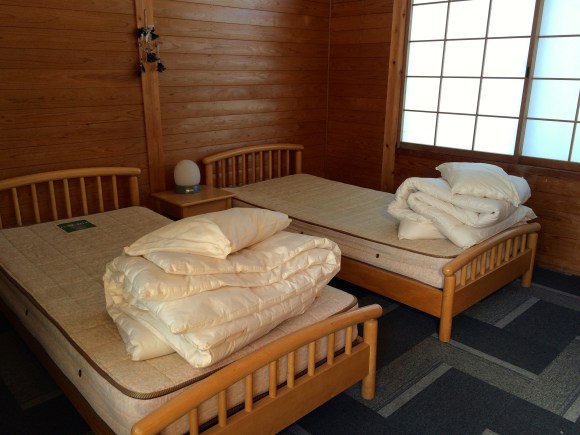
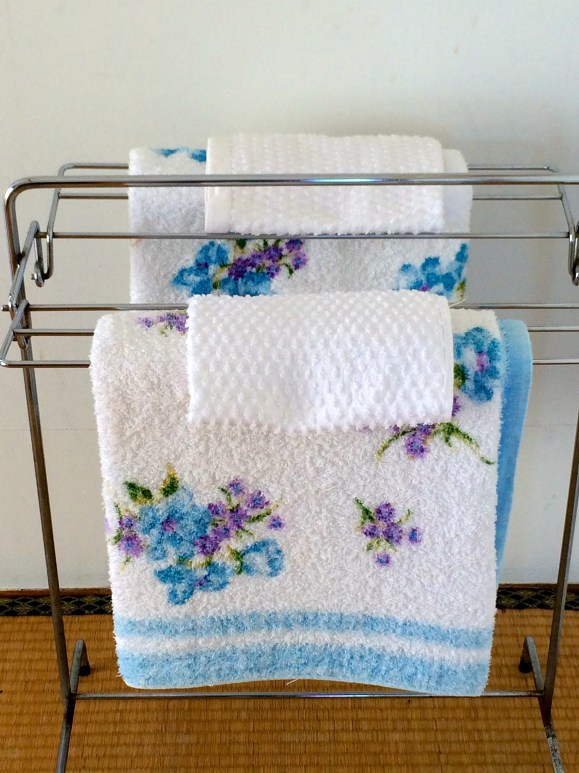
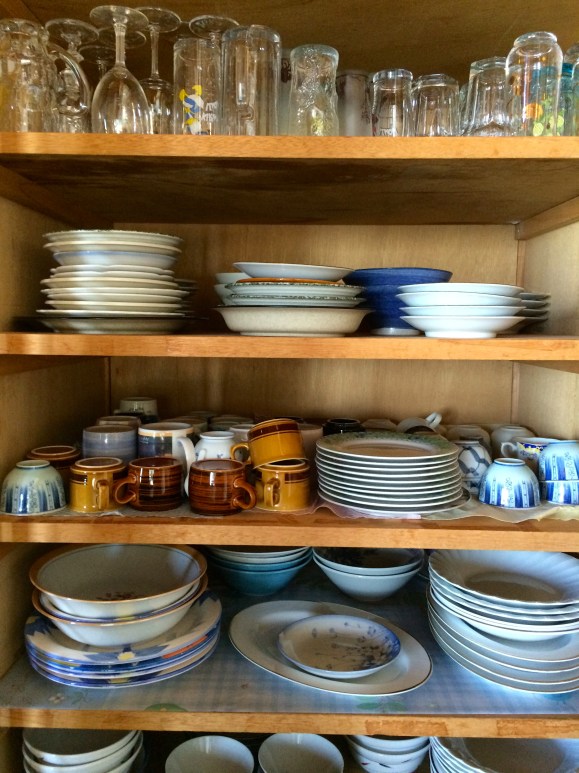
 This remote island guest house may have converted our “private rooms only” traveling reporter
This remote island guest house may have converted our “private rooms only” traveling reporter 5 tips for staying healthy while traveling in Japan this winter!
5 tips for staying healthy while traveling in Japan this winter! Budget accommodation in Japan lets you stay for less than 18 bucks a night!
Budget accommodation in Japan lets you stay for less than 18 bucks a night! The cheapest place to stay in Kyoto cost us just 1,800 yen for the night, and it was awesome
The cheapest place to stay in Kyoto cost us just 1,800 yen for the night, and it was awesome We book a night in a bookshelf at Book and Bed in Shinjuku
We book a night in a bookshelf at Book and Bed in Shinjuku Disney princesses get official manga makeovers for Manga Princess Cafe opening in Tokyo
Disney princesses get official manga makeovers for Manga Princess Cafe opening in Tokyo Randomly running into a great sushi lunch like this is one of the best things about eating in Tokyo
Randomly running into a great sushi lunch like this is one of the best things about eating in Tokyo Foreign English teachers in Japan pick their favorite Japanese-language phrases【Survey】
Foreign English teachers in Japan pick their favorite Japanese-language phrases【Survey】 Is the new Shinkansen Train Desk ticket worth it?
Is the new Shinkansen Train Desk ticket worth it? Beautiful new Final Fantasy T-shirt collection on the way from Uniqlo【Photos】
Beautiful new Final Fantasy T-shirt collection on the way from Uniqlo【Photos】 Hey, Japanese taxi driver! Take us to your favorite restaurant in Tsuruga City!
Hey, Japanese taxi driver! Take us to your favorite restaurant in Tsuruga City! Kyushu-exclusive Black Mont Blanc goes nationwide in a “Special” way
Kyushu-exclusive Black Mont Blanc goes nationwide in a “Special” way New Japanese mascot character: A train station monster that grabs children who don’t mind the gap
New Japanese mascot character: A train station monster that grabs children who don’t mind the gap Princesses, fruits, and blacksmiths: Study reveals the 30 most unusual family names in Japan
Princesses, fruits, and blacksmiths: Study reveals the 30 most unusual family names in Japan We try out “Chan Ramen”, an underground type of ramen popular in the ramen community
We try out “Chan Ramen”, an underground type of ramen popular in the ramen community New Studio Ghibli bedding sets are cool in all senses of the word
New Studio Ghibli bedding sets are cool in all senses of the word Our Japanese reporter visits Costco in the U.S., finds super American and very Japanese things
Our Japanese reporter visits Costco in the U.S., finds super American and very Japanese things New Pokémon cakes let you eat your way through Pikachu and all the Eevee evolutions
New Pokémon cakes let you eat your way through Pikachu and all the Eevee evolutions There’s a park inside Japan where you can also see Japan inside the park
There’s a park inside Japan where you can also see Japan inside the park Japanese convenience store packs a whole bento into an onigiri rice ball
Japanese convenience store packs a whole bento into an onigiri rice ball Hanton rice — a delicious regional food even most Japanese people don’t know about, but more should
Hanton rice — a delicious regional food even most Japanese people don’t know about, but more should Final Fantasy, Kingdom Hearts, and Dragon Quest pet product line announced by Square Enix
Final Fantasy, Kingdom Hearts, and Dragon Quest pet product line announced by Square Enix Studio Ghibli releases Kiki’s Delivery Service chocolate cake pouches in Japan
Studio Ghibli releases Kiki’s Delivery Service chocolate cake pouches in Japan Japan’s bone-breaking and record-breaking roller coaster is permanently shutting down
Japan’s bone-breaking and record-breaking roller coaster is permanently shutting down New definition of “Japanese whiskey” goes into effect to prevent fakes from fooling overseas buyers
New definition of “Japanese whiskey” goes into effect to prevent fakes from fooling overseas buyers Foreign passenger shoves conductor on one of the last full runs for Japan’s Thunderbird train
Foreign passenger shoves conductor on one of the last full runs for Japan’s Thunderbird train Kyoto bans tourists from geisha alleys in Gion, with fines for those who don’t follow rules
Kyoto bans tourists from geisha alleys in Gion, with fines for those who don’t follow rules Studio Ghibli unveils Mother’s Day gift set that captures the love in My Neighbour Totoro
Studio Ghibli unveils Mother’s Day gift set that captures the love in My Neighbour Totoro Domino’s Japan now sells…pizza ears?
Domino’s Japan now sells…pizza ears? Toyota built a life-sized Miraidon Pokémon and are letting people test drive it this weekend
Toyota built a life-sized Miraidon Pokémon and are letting people test drive it this weekend New Japanese KitKat flavour stars Sanrio characters, including Hello Kitty
New Japanese KitKat flavour stars Sanrio characters, including Hello Kitty Sales of Japan’s most convenient train ticket/shopping payment cards suspended indefinitely
Sales of Japan’s most convenient train ticket/shopping payment cards suspended indefinitely Sold-out Studio Ghibli desktop humidifiers are back so Totoro can help you through the dry season
Sold-out Studio Ghibli desktop humidifiers are back so Totoro can help you through the dry season Japanese government to make first change to romanization spelling rules since the 1950s
Japanese government to make first change to romanization spelling rules since the 1950s Ghibli founders Toshio Suzuki and Hayao Miyazaki contribute to Japanese whisky Totoro label design
Ghibli founders Toshio Suzuki and Hayao Miyazaki contribute to Japanese whisky Totoro label design Doraemon found buried at sea as scene from 1993 anime becomes real life【Photos】
Doraemon found buried at sea as scene from 1993 anime becomes real life【Photos】 Tokyo’s most famous Starbucks is closed
Tokyo’s most famous Starbucks is closed One Piece characters’ nationalities revealed, but fans have mixed opinions
One Piece characters’ nationalities revealed, but fans have mixed opinions We asked a Uniqlo employee what four things we should buy and their suggestions didn’t disappoint
We asked a Uniqlo employee what four things we should buy and their suggestions didn’t disappoint Studio Ghibli’s new desktop Howl’s Moving Castle will take your stationery on an adventure
Studio Ghibli’s new desktop Howl’s Moving Castle will take your stationery on an adventure Hotel guest who boiled crabs in room’s kettle angry to have to pay for damages
Hotel guest who boiled crabs in room’s kettle angry to have to pay for damages Free alcohol and curry make this cheap capsule hotel near Shinjuku Station a great place to stay
Free alcohol and curry make this cheap capsule hotel near Shinjuku Station a great place to stay Beautiful, 100-year-old Japanese guest house is so cheap, for some guests it’s free
Beautiful, 100-year-old Japanese guest house is so cheap, for some guests it’s free New Hiroshima guest house is expressly designed to feel like staying in a submarine
New Hiroshima guest house is expressly designed to feel like staying in a submarine Mr. Sato channels his inner Elsa, books a night at a Hokkaido ice hotel 【Photos】
Mr. Sato channels his inner Elsa, books a night at a Hokkaido ice hotel 【Photos】 200,000 yen-per-night Airbnb is the successor to Tokyo’s famous Nakagin capsule apartments【Pics】
200,000 yen-per-night Airbnb is the successor to Tokyo’s famous Nakagin capsule apartments【Pics】 Stay in a special Tokyo Metro train room at a hotel with a front seat to the railways
Stay in a special Tokyo Metro train room at a hotel with a front seat to the railways Osaka’s Hotel Games isn’t just full of board games, it is a game!
Osaka’s Hotel Games isn’t just full of board games, it is a game! The top three ranking of hotel “poster cats” that Japanese travelers are most eager to meet
The top three ranking of hotel “poster cats” that Japanese travelers are most eager to meet Stay at a Japanese capsule hotel in Tokyo for less than US$20 a night
Stay at a Japanese capsule hotel in Tokyo for less than US$20 a night Temple camping in Japan at Wakayama’s Daitaiji【Photos】
Temple camping in Japan at Wakayama’s Daitaiji【Photos】 My Melody and Little Twin Stars join Hello Kitty for new themed rooms at Tokyo hotel
My Melody and Little Twin Stars join Hello Kitty for new themed rooms at Tokyo hotel Sleep next to the railroad tracks at the closest hotel to a train station platform in Japan
Sleep next to the railroad tracks at the closest hotel to a train station platform in Japan Sleep in a bookshelf at the new bookstore-themed hostel in Kyoto
Sleep in a bookshelf at the new bookstore-themed hostel in Kyoto Survey reveals the most popular time to slip into a yukata at a traditional Japanese inn
Survey reveals the most popular time to slip into a yukata at a traditional Japanese inn Doll otaku’s plastic bedmate gets loving hospitality from beautiful Japanese hot spring inn
Doll otaku’s plastic bedmate gets loving hospitality from beautiful Japanese hot spring inn Stay in a Japanese hotel room…with a train inside it!
Stay in a Japanese hotel room…with a train inside it!
Leave a Reply